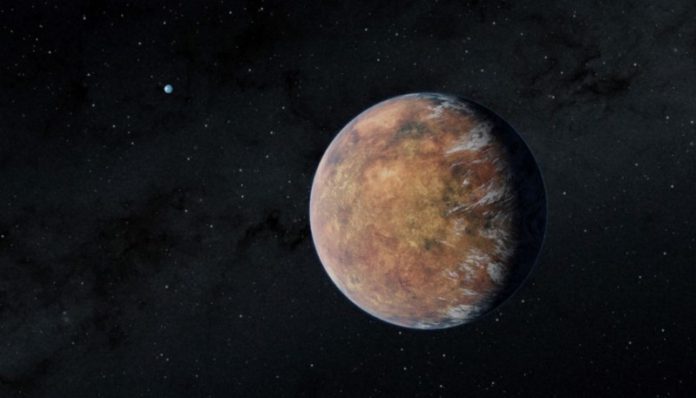A NASA mission has spottedan Earth-size exoplanet orbiting a small star about 100 light-years away.
The planet, named TOI 700 e, is likely rocky and 95% the size of our world. The celestial body is the fourth planet to be detected orbiting the small, cool M dwarf star TOI 700. All of the exoplanets were found by NASA’s Transiting Exoplanet Survey Satellite, or TESS mission.

Another planet in the system, discovered in 2020 and named TOI 700 d, is also the size of Earth. Both of these exoplanets exist in their star’s habitable zone, or just the right distance from the star that liquid water might potentially exist on their surfaces. The potential for liquid water suggests that the planets themselves could be, or might once have been, habitable for life.
The discovery of the fourth planet was announced Tuesday at the 241st meeting of the American Astronomical Society in Seattle, and a study about the exoplanet has been accepted for publication by The Astrophysical Journal Letters.
“This is one of only a few systems with multiple, small, habitable-zone planets that we know of,” said lead study author Emily Gilbert, a postdoctoral fellow at NASA’s Jet Propulsion Laboratory in Pasadena, California, in a statement.
“That makes the TOI 700 system an exciting prospect for additional follow-up. Planet e is about 10% smaller than planet d, so the system also shows how additional TESS observations help us find smaller and smaller worlds.”
Small, cool M dwarf stars like TOI 700 are common in the universe, and many have been found to host exoplanets in recent years, like the TRAPPIST-1 system and its seven exoplanets that the James Webb Space Telescope will observe.
Closest to the star is TOI 700 b, which is 90% of Earth’s size and completes one rapid orbit around the star every 10 Earth days. Then there’s TOI 700 c, which is 2.5 times bigger than our planet and finishes one orbit around the star every 16 days. These planets are both likely tidally locked, meaning they always show the same side to the star — much like how the same side of the moon always faces Earth.
The two exoplanets in the habitable zone of the star, planets d and e, have longer orbits of 37 days and 28 days, respectively, because they’re a little more distant from the star. The newly announced planet e is actually located between planets c and d.
The TESS mission, launched in 2018, monitors large portions of the night sky for 27 days at a time, staring at the brightest stars and tracking their changes in brightness. These dips in luminosity indicate orbiting planets as they pass in front of their stars, called transits. The mission began observing the southern sky in 2018, then turned to the northern sky. In 2020, the mission refocused on the southern sky again for additional observations, revealing the fourth planet in the TOI 700 system.
“If the star was a little closer or the planet a little bigger, we might have been able to spot TOI 700 e in the first year of TESS data,” said study coauthor Ben Hord, a doctoral student at the University of Maryland, College Park, and a graduateresearcher at NASA’s Goddard Space Flight Center in Greenbelt, Maryland, in a statement. “But the signal was so faint that we needed the additional year of transit observations to identify it.”
While the researchers use other space and ground-based observatories to conduct follow-up observations of the intriguing planetary system, more TESS data is pouring in.
“TESS just completed its second year of northern sky observations,” said Allison Youngblood, a research astrophysicist and the TESS deputy project scientist at Goddard. “We’re looking forward to the other exciting discoveries hidden in the mission’s treasure trove of data.”

